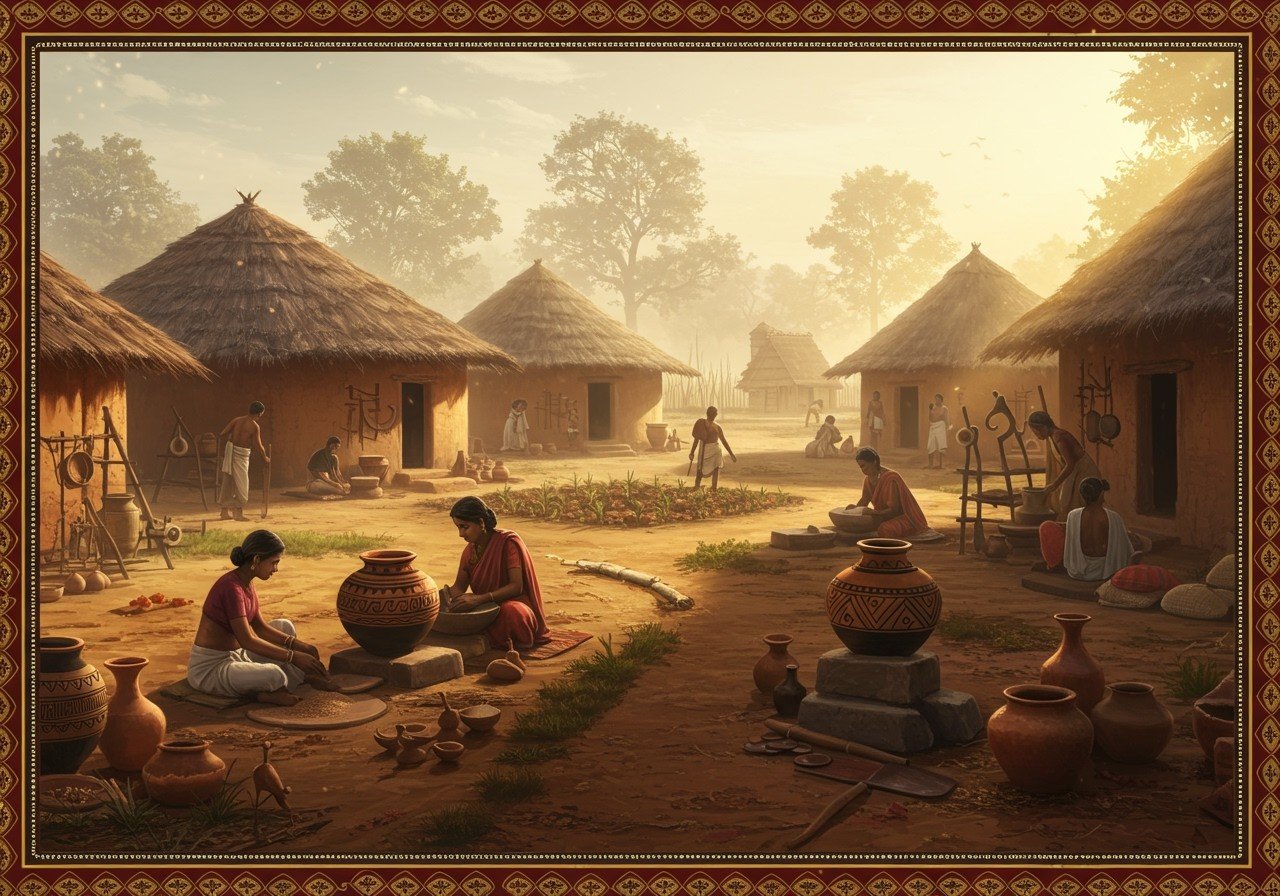
The Jorwe culture, a significant part of early Indian civilization, thrived between 1400 BCE and 700 BCE in the Deccan region, a period that predates the Indus Valley Civilization (2500-1700 BCE) known for its advanced urban planning and architecture. This blog post delves into the settlements and dwellings of the Jorwe people, offering a glimpse into their daily lives, socio-cultural practices, and how their architectural ingenuity compares to the structured living of the Indus Valley inhabitants, where housing varied based on social caste, with multi-story homes for the higher castes and smaller, single-story homes for the lower castes.
Jorwe Culture Houses
The Jorwe people resided in houses that mirrored their social structure and adaptation to the environment. Unlike the potentially hierarchical housing structures of the Indus Valley Civilization, the Jorwe people utilized readily available materials like mud, thatch, and wooden beams, prioritizing practicality and climate resilience over elaborate construction. These homes, while simpler in design compared to later architectural influences from Buddhism, Hinduism, Islam, and European styles (Bronze Age to 800 CE), reveal much about their lifestyle.
Key Features of Jorwe Houses:
- Storage Pits and Granaries: These features highlight the agricultural practices of the Jorwe people, demonstrating sophisticated storage solutions for grains and produce, possibly influenced by the evolving agricultural practices from earlier periods like the Indus Valley Civilization.
- Shared Courtyards and Communal Cooking Areas: These communal spaces fostered social interaction and a sense of community, unlike the more private layouts of later architectural periods.
- Hearths: Central to daily life and rituals, hearths served as the heart of the Jorwe home, providing warmth, a space for cooking, and a focal point for gatherings, much like in other ancient civilizations.
- House Size Variations: Variations in house sizes suggest differing social statuses within the community, a concept also observed in the Indus Valley Civilization’s housing structures.
Archaeological discoveries, including pottery and tools, provide further insights into these dwellings, adding to our understanding of daily life within the Jorwe settlements.
Jorwe Culture Area
The Jorwe culture was concentrated in the western Deccan region, predominantly in present-day Maharashtra. Key sites like Inamgaon, Daimabad, and Prakashe, strategically located along riverbanks, facilitated agriculture and trade, similar to the Indus Valley Civilization’s reliance on the Indus River.
Factors Influencing Settlement Patterns:
- Soil Fertility and Water Availability: These crucial factors for agriculture determined settlement locations, highlighting the Jorwe people’s understanding of resource management, similar to practices observed in the Indus Valley Civilization.
- Trade: The presence of foreign artifacts suggests interactions with neighboring cultures and the existence of trade routes, indicating a level of economic complexity that echoes the trading activities of the Indus Valley Civilization.
- Natural Resources: Utilizing locally available stone and clay for construction and tools reflects resourcefulness and adaptation to the environment.
Jorwe Culture Location
The Pune district was central to Jorwe settlements. The region’s river valleys and plains, particularly the Godavari and Pravara rivers, provided fertile ground for agriculture and facilitated trade routes. The Jorwe people employed advanced irrigation and water management techniques, demonstrating an understanding of their environment comparable to the sophisticated water systems of the Indus Valley Civilization.
Social Structure and Community Life
The Jorwe culture exhibited a well-organized social structure, evident in their settlements. Dwelling size and location indicate social stratification, similar to the hierarchical structure reflected in the housing of the Indus Valley Civilization.
Community Aspects:
- Communal Spaces: Fostering social interactions and community activities, these spaces highlight the importance of collective life.
- Specialized Structures: Structures like granaries and workshops suggest organized economic activities and communal resource management, echoing the planned urban layouts of the Indus Valley Civilization.
Poojn.in: Connecting with Ancient Traditions
As we explore the fascinating world of the Jorwe culture and their resourceful use of natural materials, we’re reminded of the importance of preserving our cultural heritage. Much like the Jorwe people who valued practicality and readily available resources, you too can incorporate traditional practices into your modern life. Poojn.in, India’s largest online store for cultural and religious goods, offers a wide selection of authentic puja items, including:
- Pure copper and brass items: reminiscent of ancient metalworking traditions, perfect for daily puja rituals and adding a touch of timeless elegance to your home.
- Traditional earthen lamps (diyas): similar to those used in ancient times, these diyas create a warm and sacred ambiance for your prayers and ceremonies.
- Natural incense and dhoop: crafted from traditional ingredients, these aromatic offerings enhance the spiritual atmosphere of your puja space.
- Authentic puja thalis and accessories: complete your puja setup with beautifully crafted thalis and essential accessories for a truly traditional experience.
Conclusion
Exploring Jorwe settlements offers a captivating glimpse into early Indian life. Their architectural practices, community organization, and adaptive strategies showcase ingenuity and resilience. Understanding the Jorwe culture enriches our historical perspective and honors traditions shaping Indian civilization.


